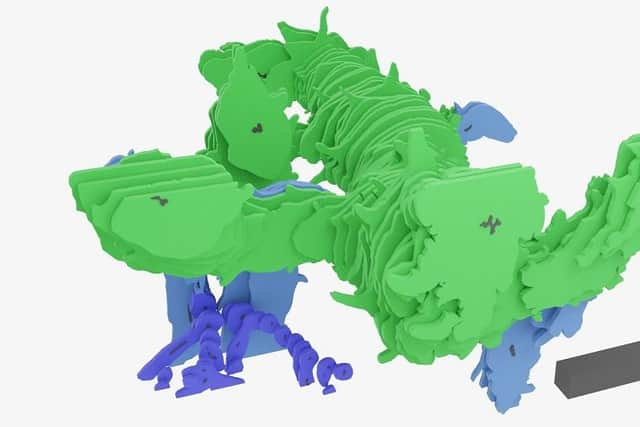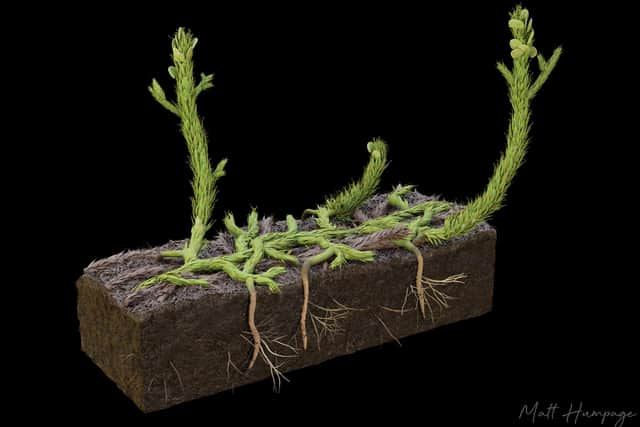Edinburgh scientists shed light on plant that bloomed 400 million years ago
Let us know what you think and join the conversation at the bottom of this article.
The model reveals how one of the earliest form of roots developed during the Early Devonian period, when plants began to spread across land.
Experts said the evolution of plants from simple stems to more complex forms with roots had a dramatic impact on the planet.


Advertisement
Hide AdAdvertisement
Hide AdPlant roots reduced atmospheric CO2 levels, stabilised the soil and revolutionised water circulation across the surfaces of continents.
Scienrtists used digital techniques to produce the first complete 3D reconstruction of Asteroxylon mackiei.
The ancient plant is an early ancestor of clubmosses - evergreen herbs with needle-like leaves that are a key feature of Scottish flora today.
The model allowed experts from the University of Edinburgh to visualise the structure and understand the root development of the plant.


Its fossil was found in the Rhynie chert - a sedimentary deposit near Rhynie, Aberdeenshire, which holds some of the world's oldest and best-preserved plant fossils.
Experts found the roots of Asteroxylon developed in a fundamentally different way from contemporary plants.
It grew by a process known as dichotomous branching - where the tip of a leafy shoot splits to produce two new branches, one a shoot, the other developing into a root.
In today's plants new roots arise from within growing shoots or roots.
Advertisement
Hide AdAdvertisement
Hide AdExperts say this discovery shows an unseen evolutionary stage between the earliest plants that lacked roots and living clubmosses that possess them.
The team included researchers from Gregor Mendel Institute of Molecular Plant Biology in Vienna, the University of Münster in Germany and the University of Oxford.
Dr Sandy Hetherington, lead researcher from the Institute of Molecular Plant Science, School of Biological Sciences, said: "How plants evolved from simple stems to complex forms with roots and leafy shoots remains one of the key questions in plant evolution.
"First discovered a century ago, the Rhynie chert continues to provide fossils that change our view of land plant evolution.
"Our 3D model of Asteroxylon demonstrates the value of evidence-based reconstructions for understanding the development and evolution of the first complex plants on Earth. "
A message from the Editor:
Thank you for reading this article. We're more reliant on your support than ever as the shift in consumer habits brought about by coronavirus impacts our advertisers.
If you haven't already, please consider supporting our trusted, fact-checked journalism by taking out a digital subscription.
Comments
Want to join the conversation? Please or to comment on this article.